ROBOTS IN JAPAN
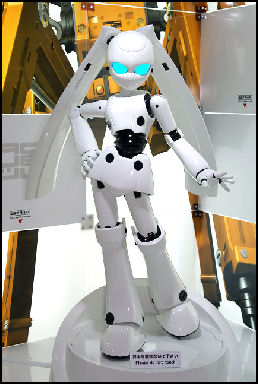
Model robot at a tech show Japan is world's leading manufacturer and consumer of robots. About half of the world's robot are made and used in Japan. About half of the world's 4,500 robot engineers are in Japan. In 2000, $5.7 billion worth of robots were produced in Japan.
Robots have been developed in Japan to help build products, to provide useful services and entertainment for people and to provide companionship for them. Research is taking place at corporations such as Sony, Honda and NEC and universities, most notably Waseda University's famed robotics lab in Tokyo.
In Japan there are dancing robots, car-driving robots, stair-climbing robots, a pair of courting robots, robot families and their neighbors. One Tokyo department store has sold piano-playing home robots for $42,000 a piece. In the future it is hoped that robots will fight fires and guide the blind.
Christal Whelan wrote in The Daily Yomiuri, in Japan “the bond between an artisan and his tools has deeper, enduring roots. Tools are revered in Japan not because they are "alive," but because they are an extension of the craftsman's body. Through daily use, a worker infuses his tools with his soul so that they acquire a kind of life of their own. This idea is common currency in Polynesia, where it is referred to as mana. Since a person and his tools make human livelihood possible, the product of this relationship is one of profound gratitude, a central value prevalent in Japanese culture that fosters a subjunctive mood. The tools are "as if" they are alive, but not mistaken for living things. [Source: Christal Whelan, The Daily Yomiuri, August 2, 2011]
Websites and Resources
Good Websites and Sources on Robots: Good Photos at Japan-Photo Archive japan-photo.de ; Photo Gallery from the 2009 Robot Show in Japan popsci.com/technology/gallery ; Time on Japan’s Love of Robots time.com/time ; Love of Robots in Japan cnet.com/In-Japan,-robots-are-people,-too ; Industrial Robots in Japan motherson.com/Welding-Robots.html ; Unemployed Industrial Robots nytimes.com/slideshow/2009/07/13 ; Waseda University Humanoid Robot Project humanoid.waseda.ac.jp ; Japanese Robots Held the Elderly USA Today ; 2009 Technology Review article on Cutting Edge Japanese Robots technologyreview.com ; Kyoto Arashiyama Orgel (Moving Doll) Museum (in Japanese) orgel-hall.com . There is an organization called the Japan Robot Association (JARA).
Famous Robots: Asimo Robot asimo.honda.com ; Sony Aibo Europe sony-europe.com/aibo ; Wikipedia article on Sony Robot Wikipedia ; Toyota Robots toyota.co.jp/en/special/robot ; Super Model Robot cnet.com/japans-latest-supermodel-a-robot
Links in this Website: SCIENCE IN JAPAN Factsanddetails.com/Japan ; NOBEL PRIZES IN JAPAN Factsanddetails.com/Japan ; JAPANESE SPACE PROGRAM Factsanddetails.com/Japan ; TECHNOLOGY IN JAPAN Factsanddetails.com/Japan ; GADGETRY AND INVENTIONS IN JAPAN Factsanddetails.com/Japan ; ROBOTS IN JAPAN Factsanddetails.com/Japan ; SONY, TOYOTA AND HONDA ROBOTS Factsanddetails.com/Japan ; UNIVERSITIES IN JAPAN Factsanddetails.com/Japan ;INDUSTRIES IN JAPAN Factsanddetails.com/Japan ; HYBRIDS, FUEL CELLS AND ELECTRIC CARS IN JAPAN Factsanddetails.com/Japan ; HONDA CARS, PLANES, ROBOTS AND RACING Factsanddetails.com/Japan ; JAPANESE ELECTRONICS INDUSTRY Factsanddetails.com/Japan ; JAPANESE ELECTRONICS COMPANIES Factsanddetails.com/Japan ; CANON, SHARP AND TOSHIBA Factsanddetails.com/Japan ; SONY Factsanddetails.com/Japan ; SONY PRODUCTS Factsanddetails.com/Japan ; PANASONIC Factsanddetails.com/Japan ; TRAINS IN JAPAN Factsanddetails.com/Japan ; SHINKANSEN (JAPANESE BULLET TRAINS) Factsanddetails.com/Japan
Good Websites and Sources on Science: Japan Science and Technology Agency jst.go.jp/EN ; MEXT, Ministry of Education, Culture, Sports, Science and Technology mext.go.jp/english ; Science Links Japan sciencelinks.jp ; Stanford University J-Guide to Science and Technology jguide.stanford.edu ;Japan Advanced Institute of Science of Technology jaist.ac.jp ; Japan Institute of Invention and Innovation jiii.or.jp/english ; Statistical Handbook of Japan Science and Technology Chapter stat.go.jp/english/data/handbook ; 2010 Edition stat.go.jp/english/data/nenkan ; News stat.go.jp ; Trends in Japan: Science and Technology web-japan.org/trends/science ; Book: “Japanese Science From the Inside” by Samuel Coleman (Routledge, 2000).
Science Museums National Museum of Nature and Science kahaku.go.jp/english ; Museum of Natural History — Tohuku University dges.tohoku.ac.jp/museum ; Osaka Museum of Natural History mus-nh.city.osaka.jp ; National Science Museum (Ueno Park in Tokyo) kahaku.go.jp National Museum of Nature and Science and Technology Tokyotopia tokyotopia.com ; Research Centers: Tsukuba Science City Wikipedia Article Wikipedia ; Fujitsu Laboratories fujitsu.com/group/labs ; Hitachi Research Laboratories hitachi.com/rd/hrl ; Toshiba Research and Development Center toshiba.co.jp
Love of Robots in Japan
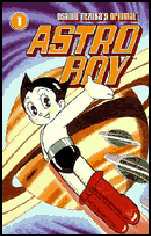
Explaining the Japanese love of robots, Rie Nakamura of Waseda University told the Daily Yomiuri, "In Japan, most people still have an animist sensibility. We've always prayed to water gods or whatever. In the same way when we see a robot, we respond to the spirit. We feel like we have to take care of it and respect it."
Japanese roboticist Masahir Mori told the Chicago Tribune that the Japanese incorporate ideas from Buddhism and Shintoism is their robots: “If you make something, your heart will go into the thing you are making. So a robot is an external self. If a robot is an external self, a robot is your child.”
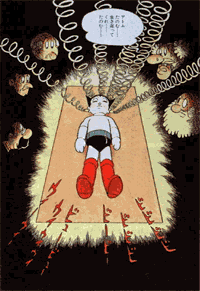
Astroboy comes to life Tokyo hosts the worlds largest robot fair — the International Robot Exhibition — every other year in late November or early December. First held in 1973 and last held in 2007, is is organized by the Japan Robot Association and Nikkan Kogyo Shimbun (a newspaper). The 2007 event featured robots, including humanoid and manufacturing robots. made by 199 companies and 66 organizations.
Japan also hosts special robotic events for children and a number of robotic sports events. There are robot dancing and karaoke contests. In May 2010, for the first time ever, a marriage was led by a robot. Tomohiro Shibata and Satoko Inoue were married in a ceremony at a Tokyo restaurant presided over by a I-fairy, a humanoid robot manufactured by the Kokoro company.
Book: “Loving the Machine: The Art and Science of Japanese Robots” by Timothy Hornyak (Kodansha International, 2006)
Early History of Robots
Homer described walking tripods in “The Iliad” in 800 B.C. Aristotle dreamed up mechanical slaves that would follow human orders. Medieval clocks features people and a variety of creatures that popped out of doors and moved around.
Some date the Japanese interest in robots to “karakuri ningyo”, mechanical dolls dating back to the 17th century. Some of these were quite sophisticated, capable of carry cups of tea without spilling and writing Chinese characters.

inside a
Bunraku puppet The mechanisms that drive karakuri ningyo — arrangements of gears and springs — are not all that different from technologies used in movie cameras and other electronic devices. One craftsmen who made a karakuri ningyo using pictures from an Edo-period book on dolls needed ten years to make a doll that actually worked.
The word robot was first used by Czech playwright Karel Capek in his 1921 play “Rossum’s Universal Robots”, about slave robots that rose up against their human masters. Coined by Karel’s brother Josef, the term "robot" is derived from the Czech word “robata,” meaning “serf,” "forced labor" or “drudgery.” The fictional robots in the play were based on chemicals not mechanics and had human skin and blood. They were built to be factory workers and designed to be as simple as possible. The maker of the of the robots in the play says: “Robots are not people. They are mechanically more perfect than we are, they have an astounding intellectual capacity, but they have no soul.” Capable of feeling emotion, these robots revolted against their human inventors, and eventually killed them. In 1924 Capek's R.U.R. (Rossum's Universal Robots) was staged in Tokyo two years after its Prague debut.
In the 1920s, robots began appearing in department stores in Japan. The first humanoid robot made in Japan was named “Gakutensoku”, (“Learning from the Laws of Nature”), created by biologist Makoto Nishimura (1883-1956) in 1928. Consisting of a three-meter-high upper half of a body sitting being a desk, it could open and close its eyes, lift a scepter with its left hand and move a pen with its right hand. The world’s first robot, a humanoid named Televox, was constructed in the United States in 1927.
Gakutensoku looked like a cheesy statue of a Buddhist god and was powered by a “ventricular system” comprised of rubber tubes and air compressors. He was dressed in a toga and sat on an ornate altar, with a mace in hand that lit up when he raised his wreathed head to the sky. Through rubber tubes and compressed air, his cheeks puffed as if he was actually breathing. On his robot Nishimura wrote: “The expanding force of compressed air works as energetically as purified blood. Once used air loses its utility and is discharged through a designated waste pipe...It would be sad to find joy in making a slavelike android that simply copies humans, which are masterpieces of the earth.” Gakutensoku was displayed at department stores and exhibition in Kyoto, Tokyo and Hiroshima and taken to Germany, after which its whereabouts became unknown, A model of the original was unveiled in 2008 by the Osaka Science Museum. [Source: Christal Whelan, The Daily Yomiuri, August 2, 2011]
Nishimura wanted to show that his robot was a part of nature. The Osaka Mainichi Shimbun quoted the biologist as saying, "If one considers humans as the children of nature, artificial humans created by the hand of man are thus nature's grandchildren." A phenomenal success, Gakutensoku went on tour to parts of Asia and Europe, just like many of his descendents have done.
Later History of Robots and Japan
.jpg)
robot clock Fritz Lang’s 1927 silent film “Metropolis” featured a new world order based on the creation of a female robot. At the 1939 World's Fair in New York, Westinghouse displayed a mechanical dog and a mechanical man named Elektro that danced, smoked and counted to 10 and looked somewhat like the Tin Man from the “Wizard of Oz”.
Japan's most famous robot is a manga and anime character named “Tetsuwan Atomu” ("Might Atom"). Known as the cartoon character Astroboy in the West, he was dreamed up in 1951 by Japanese artist Osamu Tezuka. Tetsuwan Atomu is credited somewhat with creating the image that robots can be nice, friendly and beneficial to mankind (unlike Hollywood, which often portrayed them as monsters).
Christal Whelan wrote in the Daily Yomiuri, “Tezuka, father of Japanese animation and creator of Tetsuwan Atomu (Astro Boy), had read R.U.R. Yet ultimately he too created the image of friendly technology that helps men, women and children. Tezuka formulated the Three Principles of Robot Law, and they echo those of renowned author Isaac Asimov's in his collection of nine short stories I, Robot. Tezuka said that robots should never injure or kill humans; and that robots should serve humankind. But in his third law, Tezuka grants robots the right to live free and equal lives, which is a departure from Asimov's code, which says merely that robots should not destroy themselves.Tezuka's generous granting of autonomy to robots is possibly because of a fundamental trust in tools and technology. Astro Boy, after all, symbolized an age when atomic power was seen as a symbol of hope for the future. The Expo '70 held in Osaka promoted the same narrative of robots as friendly, working machines. [Source: Christal Whelan, The Daily Yomiuri, August 2, 2011]
Japan imported its first industrial robot, a Versatran unit, from AMF in 1967. By the 1970s, Japan was producing it own robots with the help of $200 million in funding from the government. Production peaked in 1991.
WABOT-1, an organ-playing robot developed at Waseda University in 1973, is said to be first robot with artificially intelligence. The Humanoid Robotic Group at M.I.T. is trying to develop robots with human qualities such as fallibility and whinesses but has difficulty overcoming obstacle and sometimes has problems just getting it robot to look people in the eye and keep a conversation going.
Robots were perhaps the biggest stars at the 2005 World Exposition in Aichi Prefecture. At the Toyota pavilion they played real musical instruments. In the Mitsubishi pavilion they served as tour guides. At an information center an attractive female “Actroid” robot welcomed visitors. She understood 40,000 phrases in Chinese, Korean, English and Japanese and could defend herself against unwanted advances. Other robots cleaned floors, collected trash and provided security. Claims were even made that some of the robots could take care of children.
See Fukushima Nuclear Crisis in 2011
Japan has said it hopes to send a robot to the moon by 2015. An Osaka-based company called Astro-technologies SOHLA is developing two-legged humanoid robots to work on the moon at a cost of ¥1 billion.
New Generation of Robots
Chris Carroll wrote in National Geographic: A new generation of robots are “artificial beings designed to function not as programmed industrial machines but as increasingly autonomous agents capable of taking on roles in our homes, schools, and offices previously carried out only by humans. The foot soldiers of this vanguard are the Roomba vacuums that scuttle about cleaning our carpets and the cuddly electronic pets that sit up and roll over on command but never make a mess on the rug. More sophisticated bots may soon be available that cook for us, fold the laundry, even babysit our children or tend to our elderly parents, while we watch and assist from a computer miles away. [Source: Chris Carroll, National Geographic, August 2011]
“In five or ten years robots will routinely be functioning in human environments," says Reid Simmons, a professor of robotics at Carnegie Mellon.Such a prospect leads to a cascade of questions. How much everyday human function do we want to outsource to machines? What should they look like? Do we want androids like Yume puttering about in our kitchens, or would a mechanical arm tethered to the backsplash do the job better, without creeping us out? How will the robot revolution change the way we relate to each other? A cuddly robotic baby seal developed in Japan to amuse seniors in eldercare centers has drawn charges that it could cut them off from other people. Similar fears have been voiced about future babysitting robots. And of course there are the halting attempts to create ever willing romantic androids. Last year a New Jersey company introduced a talking, touch-sensitive robot "companion," raising the possibility of another kind of human disconnect.
“Traditional robots, the kind you might find spot-welding a car frame, can be programmed to carry out a very precise sequence of tasks but only within rigidly structured environments. To negotiate human spaces, robots need to perceive and cope with unfamiliar objects and move about without bumping into people who are themselves in motion.” Humanlike robots tend to have a “perception system consists of a video camera and a laser navigation device mounted on a boom above his mechanical arm.
What Is a Human and What Is a Robot?
Chris Carroll wrote in National Geographic: In a 2007 paper provocatively entitled "What Is a Human?" developmental psychologist Peter Kahn of the University of Washington, together with Osaka University robot scientist Hiroshi Ishiguro and other colleagues, proposed a set of nine other psychological benchmarks to measure success in designing humanlike robots. Their emphasis was not on the technical capabilities of robots but on how they're perceived and treated by humans. [Source: Chris Carroll, National Geographic, August 2011]
“Consider the benchmark "intrinsic moral value" — whether we deem a robot worthy of the basic moral considerations we naturally grant other people. Kahn had children and adolescents play guessing games with a cute little humanoid named Robovie. After a few rounds an experimenter would abruptly interrupt just as it was Robovie's turn to guess, telling the robot the time had come to be put away in a closet. Robovie would protest, declaring it unfair that he wasn't being allowed to take his turn.
“You're just a robot. It doesn't matter," the experimenter answered. Robovie continued to protest forlornly as he was rolled away. Of course it wasn't the robot's reaction that was of interest — it was being operated by another researcher — but the human subjects' response. "More than half the people we tested said they agreed with Robovie that it was unfair to put him in the closet, which is a moral response," says Kahn.
“That humans, especially children, might empathize with an unjustly treated robot is perhaps not surprising — after all, children bond with dolls and action figures. For a robot itself to be capable of making moral judgments seems a more distant goal. Can machines ever be constructed that possess a conscience, arguably the most uniquely human of human attributes? An ethical sense would be most immediately useful in situations where human morals are continually put to the test — a battlefield, for example. Robots are being prepared for increasingly sophisticated roles in combat, in the form of remotely operated drones and ground-based vehicles mounted with machine guns and grenades. Various governments are developing models that one day may be able to decide on their own when — and at whom — to fire. It's hard to imagine holding a robot accountable for the consequences of making the wrong decision. But we would certainly want it to be equipped to make the right one.
“The researcher who has gone the furthest in designing ethical robots is Ronald Arkin of the Georgia Institute of Technology in Atlanta. Arkin says it isn't the ethical limitations of robots in battle that inspire his work but the ethical limitations of human beings. He cites two incidents in Iraq, one in which U.S. helicopter pilots allegedly finished off wounded combatants, and another in which ambushed marines in the city of Haditha killed civilians. Influenced perhaps by fear or anger, the marines may have "shot first and asked questions later, and women and children died as a result," he says. In the tumult of battle, robots wouldn't be affected by volatile emotions. Consequently they'd be less likely to make mistakes under fire, Arkin believes, and less likely to strike at noncombatants. In short, they might make better ethical decisions than people.
“In Arkin's system a robot trying to determine whether or not to fire would be guided by an "ethical governor" built into its software. When a robot locked onto a target, the governor would check a set of preprogrammed constraints based on the rules of engagement and the laws of war. An enemy tank in a large field, for instance, would quite likely get the go-ahead; a funeral at a cemetery attended by armed enemy combatants would be off-limits as a violation of the rules of engagement.
“A second component, an "ethical adapter," would restrict the robot's weapons choices. If a too powerful weapon would cause unintended harm’say a missile might destroy an apartment building in addition to the tank — the ordnance would be off-limits until the system was adjusted. This is akin to a robotic model of guilt, Arkin says. Finally, he leaves room for human judgment through a "responsibility adviser," a component that allows a person to override the conservatively programmed ethical governor if he or she decides the robot is too hesitant or is overreaching its authority. The system is not ready for real-world use, Arkin admits, but something he's working on "to get the military looking at the ethical implications. And to get the international community to think about the issue.”
Industrial Robots in Japan
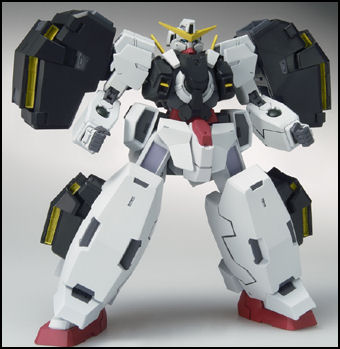
Gundam toy In 2003, Japan had 348,734 of the world 800,772 industrial robots. By contrast. The European Union had 249,200 and the United States had 112,390. The same year Japan had 320 robots for every 10,000 employees, compared to 148 in Germany and between 50 and 80 in the United States. Spain and France. [Source: International Federation of Robotics]
Japanese factories have used robots to improve quality and productivity, replacing some workers. Automobile factories use robots primarily to weld auto body joints. In electronic plants they assemble televisions.
Sales of robots in Japan in 2005 (millions of dollars): 1) factories (7030); 2) transportation and warehousing (450); 3) agriculture and fishing (390); 4) medical and health care (250); 5) utilities and power plants (190); 6) garbage disposal (130); and 7) retail distribution (125).
Major industrial robot manufacturers: 1) Kawasaki Heavy Industries; 2) Yaskawa Electric Corp.; 3) Fanuc Ltd.; and 4) Nachi-Fujikoshi Corp These companies expanded and were very profitable in the 1980s and 90s but started falling on hard times in 2000s as demand declined.
Robotics is a very big and profitable business in the automobile industry. According to Automotive News, 10,000 robots worth $753 million, were purchased by American automakers and supplier sin 2007.
The winner of the 2007 Robot of the Year award was a set of mechanical arms that could pick 120 items a minute from a conveyor belt. The robot, named M-430iA, produced by Fanuc Ltd., won out over flashier models that included a walking humanoid robot, a firefighting robot and a transparent torso for simulating surgery. Describing the M-430iA in action AP reported: “Swiveling in almost manic frenzy, the arms quickly but accurately analyze camera data of little square pieces scattered randomly on a swiftly-moving conveyor belt. The arms picked up the items, using suction cups that blew air in and out at their lips. They then worked together to neatly place them in rows in boxes.”
Japanese electronics companies such as Canon have announced they will enter the robotics market. Hiraku Iwasaki wrote in the Yomiuri Shimbun, “Japanese manufacturers are finding themselves losing ground to South Korean rivals in the production of flat-screen televisions among other products. In robotics, however, Japan can take advantage of its superior procession technologies in multiple fields.”
Yaskawa Electric Corp. produces “Mecha-Najavu” — a robot with a cat head that makes bowls of flavored shaved ice. “Mecha” is short for mechanical.” Najavu” is the name of a popular cat masco at the Namja Town theme park in Tokyo.
Advantages of Industrial Robots in Japan
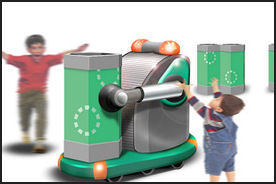 Soichiro Honda, the founder of Honda Motor Company, said: "Any businessman incapable of taking advantage of robotics cannot be called an able businessman. But one who fires employees because of robotics cannot be called able, either. Labor and robotics should “prosper and grow together.”"
Soichiro Honda, the founder of Honda Motor Company, said: "Any businessman incapable of taking advantage of robotics cannot be called an able businessman. But one who fires employees because of robotics cannot be called able, either. Labor and robotics should “prosper and grow together.”"
A spokesman for Inaba, one of Japan's leading robot manufacturer and world's leading maker of numerically-controlled equipment for machine tools, said that even though sometimes robots are considerably more expensive than a skilled Southeast Asian worker — $50,000 for a robot versus a $5,000 annual salary for a worker — the machines were more economical because their depreciation costs can be deducted from corporate taxes.
In recent year robots have fallen out of favor in the automobile industry because less automated factories are easier to adapt to new models and design changes. The newest assembly lines are only about 20 percent automated, with robots focusing primarily on painting and welding.
The M-430iA is a robot made for the food and pharmaceutical industry which is trying to improve efficiency and limit human contact its products, reducing the chance of contaminating them with dirt or microorganisms. The robots are easy to clean and work 24 hours straight.
Security Robots in Japan
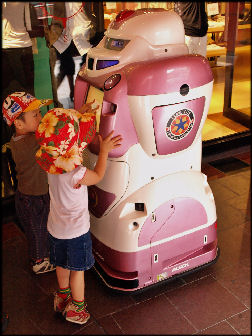
shopping mall robot Several companies have developed robots that act as security guards. Tmsuk Co makes the Banyri home security robot, which looks like a four-legged armored spider. It sends pictures to its owners mobile phone when it detects unusual sounds, smells or temperature changes. It sells for about $18,000. Secom has developed a 400-kilogram robot designed to carry cash from banks to armored cars.
Sogho Security Services has developed a robot — Guard Robo D1 — that patrols offices and buildings. Using sensors that can detect infrared radiation, ultraviolet rays and odors, it can distinguish between people and objects, When it senses fire, water or people it sends a message to alert human guards, and transmits images using a camera. After finishing a patrol the robot can automatically charge itself by connecting itself to a battery charger. The data buttons on its chest can be pushed for information. Another model of robot made by the company provided visitors to Expo in Aichi with information in four languages.
Humanoid robotic traffic controllers have been put to use directing traffic in Tokyo. Enin is a guide and security robot produced by Fujutsu that is designed for corporate facilities and shopping malls. Comprised of an upper body with a touch screen chest, it can alert people if there an is unfamiliar face and provide directions. If someone want to know where a restroom is he can touch an icon on the robot’s touch screen, and a map appears and the robot points in the direction of the rest room.
Halluc II, an advanced 80-centimeter-long robot developed by Chiba Institute of Technology and the industrial designer Shunji Yamanaka, is regarded as one of the most mobile and dexterous of all robots. Used in some emergency vehicles, it has eight legs and wheels operated by 56 motors.
Robots Used at the Fukushima Nuclear Power Plant
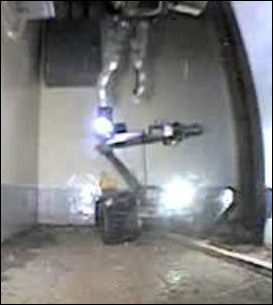
robot inside plant Christal Whelan wrote in the Daily Yomiuri, “Despite Japan's extraordinary expertise in robotics, the country was unprepared to use them in scenarios resulting from the March 11 Great East Japan Earthquake. Instead, iRobot's PackBot and Warrior from the United States assumed leading roles in missions. [Source: Christal Whelan, The Daily Yomiuri, August 2, 2011]
TEPCO first used American-made, remote-controlled robots with tractor treads able to climb stairs and cameras at the end of a retractable arm to get a better look at the damage and measure radiation levels, oxygen and temperatures inside the radiation-filled reactor buildings. In mid April the robots began checking out the damage in places in the nuclear power plant where radiation levels were too high for humans to enter.
The first robots to be used were 510 PackBot robots, made by iRobot, a Bedford-Massachusetts-based company best known for its Roomba robotic vacuum cleaner. More than 3,500 PackBots have been delivered to Afghanistan and Iraq for U.S. military use in detecting and disarming homemade bombs. They've also been employed by police bomb squads and were used to help search for bodies after the Sept. 11 attacks. [Source: John M. Glionna and Yuriko Nagano, Los Angeles Times, May 08, 2011]
iRobot donated four robots and sent six trainers to Japan to show how the robots worked. Describing one of the 510 PackBots at work in Reactor No.2 John M. Glionna and Yuriko Nagano wrote in the Los Angeles Times, “The little robot rumbled across an otherworldly landscape, its camera lens clouding up in a hostile atmosphere too toxic for human habitation. Its motor whirring, it dispatched a constant stream of images to nervous operators grouped a safe distance away....No larger than a child’s wagon, it bumps across uneven terrain on hours-long forays. One picture released by the Tokyo Electric Power Co. shows a robot arm slowly and awkwardly manipulating a handle on a pair of double doors that lead into a reactor building.”
Later a similar tractor-tread robot named Quince, developed at Chiba Institute of Technology and Tohoku University, was put to use investigating harder-to-reach places. The 66-centimeter-long, 48-centimeters-wide robot was designed to work in disaster areas or during a terrorist attack. Converted to work under high-radioactivity conditions in a nuclear plant, it uses two main treads and four small tracks on the sides to maneuver over difficult terrain and rubble.
Other robots used at Fukushima nuclear power plant included an unmanned water cannon truck comprised of a a German-concrete-pumping vehicle with remote-controlled systems made by Toshiba and Hitachi installed operated from a truck with shields that block out radioactivity. The British defense contractor Qinetiq Group provided six mobile robots, ranging from lightweight surveillance machines to heavy construction vehicles, including a remote-controlled Bobcat payloader with night-vision cameras, thermal-imaging systems and radiation detectors. A Swedish company — Brokk AB, a manufacturer of remote-controlled demolition machines that provided robots to clean up waste at Chernobyl after the 1986 nuclear disaster — provided machinery to remove rubble from the reactor buildings at Fukushima.
Embarrassment that Foreign Robots Were Used Rather than Japanese Ones
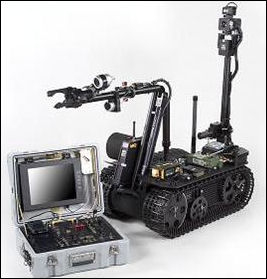
Christal Whelan wrote in the Daily Yomiuri, “Despite Japan's extraordinary expertise in robotics, the country was unprepared to use them in scenarios resulting from the March 11 Great East Japan Earthquake. Instead, iRobot's PackBot and Warrior from the United States assumed leading roles in missions. Although Quince, a Japanese robot for nuclear and biological disaster relief, was sent to the No. 2 reactor of the Fukushima No. 1 nuclear power plant to set up a gauge to measure contaminated water flooding the basement, it got caught on the staircase landing and failed to reach its destination, according to a Tokyo Electric Power Co. spokesperson. [Source: Christal Whelan, The Daily Yomiuri, August 2, 2011]
There was some embarrassment that foreign robots were used rather than Japanese ones. John M. Glionna and Yuriko Nagano wrote in the Los Angeles Times, “in a nation renowned for its robotics research, many here are asking why the remote-controlled machines had to be imported. Critics say Japanese scientists have wasted too much of their expertise developing such gimmicky technology such as robots that can sing, dance and play musical instruments rather than more practical versions that could have been put to use in a national emergency.” [Source: John M. Glionna and Yuriko Nagano, Los Angeles Times, May 08, 2011]
Even after a 1999 accident at a nuclear plant in which two workers died of radiation exposure, Japan's nuclear power industry has been slow to invest in the development of radiation-resistant robots. "In the U.S., the Department of Defense buys sturdy robots like PackBots for military use, and French law makes it mandatory for its government to spend money on technology such as robots for nuclear emergencies as a precautionary measure," Hirohisa Hirukawa, director of the Intelligent Systems Research Institute at the National Institute of Advanced Industrial Science and Technology told the Los Angeles Times, "Japan doesn't have that."
Following the deaths of the two nuclear workers, officials considered developing robots that could cope in nuclear disasters, but the momentum was soon lost. "After they found that the building that housed the nuclear reactor was safe, authorities said, 'There won't be an accident and we won't need such robots,' and efforts to develop such robots have been scrapped," said Masahiro Sakigawara, general manager at the Future Robotics Technology Center at the Chiba Institute of Technology.
Rescue Robots in Japan
Christal Whelan wrote in the Daily Yomiuri, “The only useful Japanese robot appeared to be the Active Scope Camera, an 8-meter snakebot equipped with a fiber-optic camera that slithered along the ground and over rubble to relay images. According to Hiroshi Okuno, a professor who specializes in robotic audition at Kyoto University, the myth of nuclear safety has long stunted the development of rescue robots in Japan. Beyond research, the training of skilled operators of robots is essential. [Source: Christal Whelan, The Daily Yomiuri, August 2, 2011]
The Rescue Robot Contest began in 2001, with the idea to sharpen the public's sense of disaster preparedness and to train young people in the principles of rescue through remote-controlled robots they have designed themselves. Although many of the designs look like piles of junk on wheels, they are creative and require considerable skill to maneuver--skills that are ultimately transferable. At the contest, rescuers sit at terminals out of view of an 8-meter rescue space. The aim is to rescue small cloth dummies quickly and gently. Fitted with sensors, these small figurines monitor the quality of a rescue. The Rescue Robot Contest is one way to combat complacency and take disaster preparedness to heart. Readiness is all.
Giant Piloted Robot Displayed in Tokyo
In November 2012, The Yomiuri Shimbun reported: “People who want to see a huge, piloted robot can realize their dreams at the National Museum of Engineering Science and Innovation in Koto Ward, Tokyo. The robot, called Kuratas, was built over two years by Kogoro Kurata, a 39-year-old contemporary artist, and Wataru Yoshizaki, a 27-year-old robot engineer, robot in Kurata's studio in Yamanashi Prefecture. [Source: Yomiuri Shimbun, November 30, 2012]
The robot is about four meters high and weighs about four tons. It has a humanlike face and body, two arms and four legs. A person can sit at the cockpit in the chest cavity and control the robot's arms and legs with bars and touch panels. The robot's four legs have wheels and it can run at a maximum speed of 10 kph."I've liked robots since my childhood," Kurata said. "I wanted to see whether riding in a large robot would be joyful or scary.”
Image Sources: 1) 11) 12) 17) 18) xorsyst blog 2) 3) Osama Tezzuka and Japan Zone 4) Japan Arts Council 5) 9) Ray Kinnane 6) Goods from Japan 7) 8) 14) 15) 16) Aichi Expo 10) Sony and Japan Zone 12) Mitsubishi 13) Honda ; last two TEPCO
Text Sources: New York Times, Washington Post, Los Angeles Times, Daily Yomiuri, Times of London, Japan National Tourist Organization (JNTO), National Geographic, The New Yorker, Time, Newsweek, Reuters, AP, Lonely Planet Guides, Compton’s Encyclopedia and various books and other publications.
Last updated January 2013
